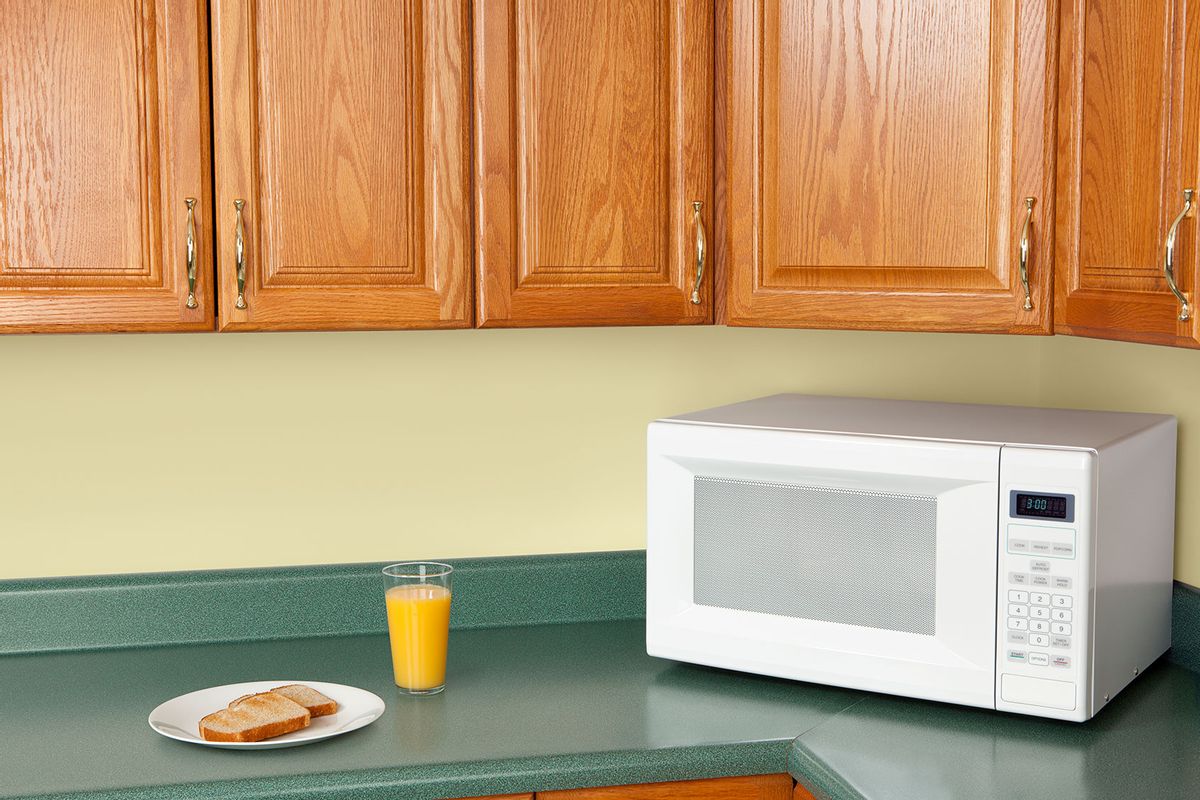With prices in truly exorbitant territory, eggs are a hot topic. Nowadays, you don't want to waste a single egg, especially if you're lucky enough to get your hands on some that are priced well.
The poached egg, though, is a gem of egg cookery that sometimes transcends the hodgepodge of omelets, frittatas, hard-or-soft boiled, over-easy and sunny-side-up varieties. There's an inherent elegance to the poached egg. It is lovely over a salad, atop avocado toast, or — of course — in Eggs Benedict, arguably the piece de resistance of poached egg dishes. It's also excellent all on its own.
Traditionally, though, poaching eggs is ... an undertaking, to be frank. You have to bring a pot of water to a gentle, rolling boil, you have to add some vinegar to the water, you have to create a "vortex" in the pot, you have to crack your egg into a ramekin or a small bowl. Then you have to gingerly place the egg in the water and then use your wooden spoon to gather up some of those errant stands of egg white and wrap them carefully around the cooking yolk. It's by no means a cooking technique that lends itself well to frenzied, rush-rush weekday morning pacing.
A few months back, though, at our annual family Christmas Eve gathering, my cousin introduced me to a whole new concept: microwave-poached eggs.
What a world! According to my cousin, she has this every single morning before leaving for work. She said that she places an egg, some vinegar and a touch of water in a ramekin before covering it and placing it in the microwave for a super quick cook-time.
We were chitchatting a bit about it with some other relatives before the topic changed, but I was fascinated by the ease and simplicity of this approach versus the "classic" technique. Could it really be that simple? Would the quality of the poached egg be comparable to one made in a pot of boiling water? Would it still poach properly if you didn't cover the ramekin? I thought I'd tackle at least these questions (and maybe more) and try the technique out.
Upon further research, I found out that this is actually a tried-and-true method that has been around for years.
Want more great food writing and recipes? Subscribe to Salon Food's newsletter, The Bite.
Some quick notes: only poach one egg at a time. You needn't microwave for any longer than a minute or a minute and a half and you actually don't even really need the vinegar. Some outlets recommend poking a hole in the yolk with a toothpick "so it doesn't explode," but if you're covering the vessel you're microwave-poaching in, that shouldn't be much of a concern. You do, however, need to cover the ramekin, bowl, or mug in order for the egg to properly poach.
This method is also pretty user-friendly. If you pull the ramekin out and the egg is a bit undercooked, feel free to throw it back in for another 10 seconds or so, which should help. You want the white to be fully cooked with a slightly loose, runny yolk. Still not done to your liking? Aim for yet another 10 seconds, cooking it until you are satisfied with the doneness. In trying this method out a few times, I found that the runny yolk gets decisively un-runny around the 1 minute and 20 second mark, so if you're aiming for a loose yolk, definitely cook your poached egg for less than 80 seconds.
Sara Bir at Simply Recipes references a 1987 cookbook by Janet Emal and Barbara Kern called "Kids Cook Microwave," which takes the approach in a slightly different direction. "By reducing the water to 1/4 cup and microwaving for 60 seconds before adding the egg, their method is not only quicker; it eliminates some of the variables" inherent in microwaving eggs, which can sometimes differ dependent on microwave wattage and power, the ramekin used and the quality or freshness of the egg itself.
No matter your approach, though, this method is no joke and shouldn't be discarded or brushed off.
Also, it's a little fussy, but if you have one on hand, use a slotted spoon to transfer your microwave-poached egg to a plate. If you'd like, you can get even fussier and dab it on a paper towel or napkin before transferring it to your plate and seasoning it with flaky salt.
Though it may take a bit of time to really get the hang of how eggs poach in your microwave and with your desired cooking vessel, you'll be pretty set once you get a hang of it. While the quality can sometimes be a bit lacking, if you're just looking for a super-quick breakfast or you're planning on slathering them with Hollandaise, cheese, or hot sauce, a microwaved poached egg is "better than fine," to quote the illustrious Fiona Apple.
Ingredients
- 1 egg
- Water
- Kosher salt, to taste
Directions
- In a ramekin, glass measuring cup, or small bowl, fill about halfway with water (usually between 1/4 and 1/3 cup)
- Place egg into cooking vessel, submerging it as much as possible.
- Cover with plastic wrap, a lid, or a small plate. Transfer to microwave and cook for 1 minute.
- If the egg isn't cooked to your liking, cook in additional 10-second increments until it is.
- With a spotted spoon, transfer to paper towel to drain. Season with salt and enjoy.



Shares